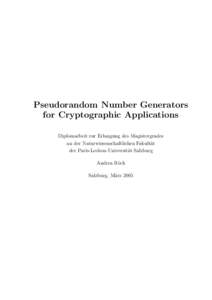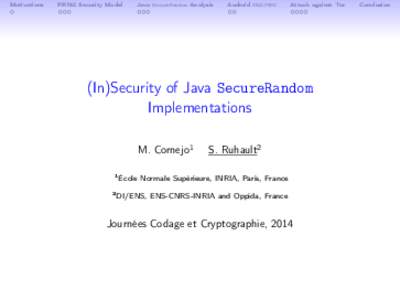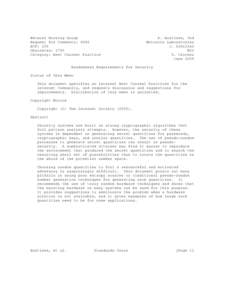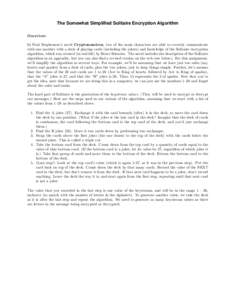<--- Back to Details
| First Page | Document Content | |
|---|---|---|
 Date: 2006-05-30 13:31:48RC4 Weak key Stream cipher Key size Fluhrer Mantin and Shamir attack Related-key attack Cryptography Pseudorandom number generators Key management |
Add to Reading List |
 | Pseudorandom Number Generators for Cryptographic Applications Diplomarbeit zur Erlangung des Magistergrades an der Naturwissenschaftlichen Fakult¨at der Paris-Lodron-Universit¨at Salzburg Andrea R¨ockDocID: 1tghr - View Document |
 | Motivations PRNG Security Model Java SecureRandom AnalysisDocID: 1rmDv - View Document |
 | Network Working Group Request for Comments: 4086 BCP: 106 Obsoletes: 1750 Category: Best Current PracticeDocID: 1qWaS - View Document |
 | The Somewhat Simplified Solitaire Encryption Algorithm Overview: In Neal Stephenson’s novel Cryptonomicon, two of the main characters are able to covertly communicate with one another with a deck of playing cards (inclDocID: 1qAir - View Document |
 | Microsoft Word - IBSS&K Engineering.docDocID: 1qpK0 - View Document |
 A Class of Weak Keys in the RC4 Stream Cipher Preliminary Draft Andrew Roos Vironix Software Laboratories 22 September 1995
A Class of Weak Keys in the RC4 Stream Cipher Preliminary Draft Andrew Roos Vironix Software Laboratories 22 September 1995